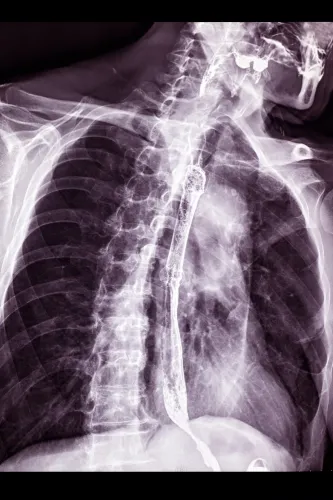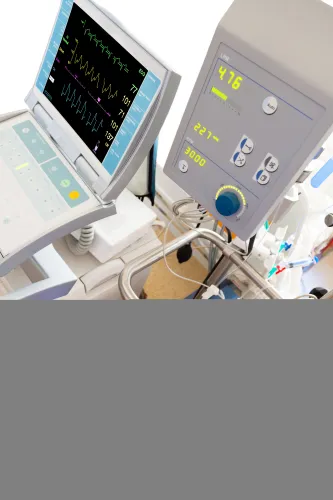Cut Down on Denials for Your Non-Congenital and Congenital TEE Claims
Hint: Don’t forget to append modifier 26 when appropriate. You could be entering treacherous claim territory when your cardiologist performs a transesophageal echocardiogram. Why? You need to know whether the TEE was for non-congenital (acquired) abnormalities or congenital abnormalities. Read on to learn more about TEEs and protect your practice’s bottom line. First, Define TEEs for Clarity A cardiologist performing an echocardiogram uses an ultrasound to investigate the structures of the patient’s heart to see how well they are functioning. There are several different types of echoes, including TEEs. Transesophageal refers to a service performed through the esophagus — the tube from the mouth to the stomach. Therefore, when a cardiologist performs a TEE, he inserts an ultrasound probe with a transducer into the esophagus. The transducer sends out sound waves and receives the echoes to create an image on the computer screen. By placing the probe in the esophagus, which is directly behind the heart, the physician can see the heart without a lot of other structures in the way. Remember These CPT® Codes for Diagnostic TEEs Non-congenital: You would look to the following codes to report non-congenital TEEs: Don’t miss: “A common mistake for coders is to report a transthoracic echo when a transesophageal echo was really done,” says Theresa Dix, CCS-P, CPMA, CCC, ICDCT-CM, coder/auditor of East Tennessee Heart Consultants in Knoxville, Tennessee. Solution: Read the documentation carefully to ensure you understand if the cardiologist performed a TEE versus a TTE. TTEs for reasons other than congenital heart disease are identified by codes 93306 (Echocardiography, transthoracic, real-time with image documentation (2D), includes M-mode recording, when performed, complete, with spectral Doppler echocardiography, and with color flow Doppler echocardiography) through 93308 (…, follow-up or limited study). A facility would report C8923 (Transthoracic echocardiography with contrast, or without contrast followed by with contrast, real-time with image documentation (2D), includes M-mode recording, when performed, complete, without spectral or color doppler echocardiography) through C8924 (… follow-up or limited study) or C8929 (Transthoracic echocardiography with contrast, or without contrast followed by with contrast, real-time with image documentation (2D), includes M-mode recording, when performed, complete, with spectral doppler echocardiography, and with color flow doppler echocardiography). Discover Options for Congenital Cardiac Anomalies Congenital: Make sure not to mix up 93312-93314 with the codes CPT® identifies for congenital cardiac anomalies. When the cardiologist performs TEE for congenital cardiac anomalies, report the following codes: If an echo detects any congenital abnormality, you can report the congenital echo codes, according to CPT® Assistant Vol. 23, No. 8. Also, when other studies have shown that the patient has congenital heart disease, you should report the TEE with congenital echocardiography codes. The key word here is “known” congenital abnormality, says Christina Neighbors, MA, CPC, CCC, Coding Quality Auditor for Conifer Health Solutions, Coding Quality & Education Department, and member of AAPC’s Certified Cardiology Coder steering committee. If the echo detects a “known” or suspected congenital heart disease that has little or no clinical significance, you can still report this with a congenital echo code, per CPT® Assistant Vol. 23, No. 8. “However, if the work involved is less than usual for congenital echo imaging, the physician may choose to report the non-congenital echo codes.” Warning: Do not use modifier 22 (Increased procedural services) with codes for congenital echocardiography, Neighbors adds. The increased work of performing these studies is included in the congenital codes. CPT® Assistant is also very clear about how to handle cases where congenital heart disease is suspected but not found during the echo. You should not report congenital codes 93315-93317, when congenital heart disease is suspected but not found during echo evaluation, CPT® Assistant Vol. 23, No. 8 explains. Instead, you should report non-congenital echo codes. Remember to Check for Professional/Technical Component Ensure your coding tells the right story of what happened during the TEE by attaching the right modifiers. Since most TEEs are done in the outpatient or inpatient hospital setting, you should append modifier 26 (Professional component) to the service when the cardiologist performs them there, Cathey says. Exception: 93313 and 93316 are, by definition, for “placement of transesophageal probe only” and, therefore, the 26 modifier is not applicable as the code definition itself is a professional service only.




